
The title of this article popped into my head as I was looking through my charts as the year came to an end. Readers of a certain vintage may recognize the work of Page and Plant (my father would be so proud of me for working this in here). However, this lyric came to me because something that we have been watching and talking about for nearly two years has played out. The bond market looked at the stock market and said:
And so, today my world it smiles
Your hand in mine, we walk the miles
You might have missed, hopefully you did, as you were spending time with the important people in your life, but the five-year stock/bond correlation turned positive for the first time since ~2002.
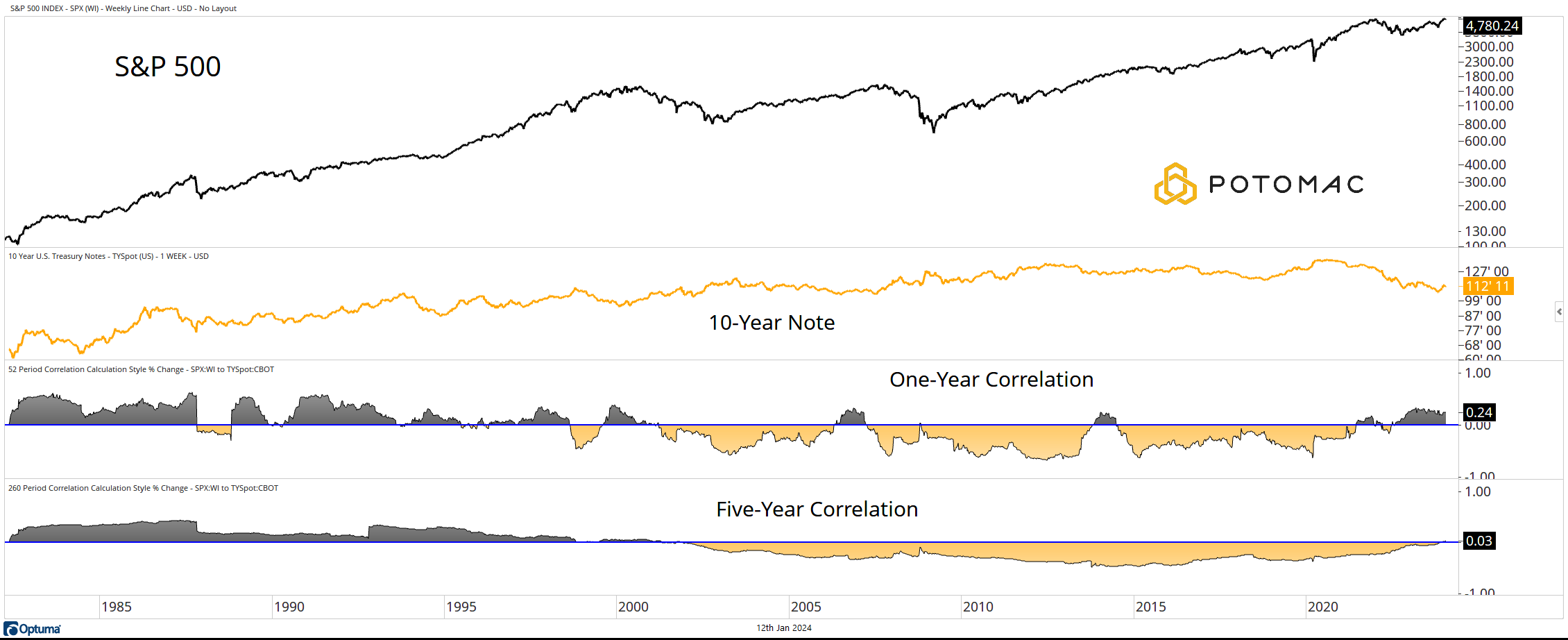
For those who have been paying attention, this has been a big topic for us since the Spring of 2022. It is nice to see it play out, but it is more satisfying to see some large institutions that manage massive amounts of capital come around to this idea.
As you already know, we think the ramifications of this could be very large.
But first, some clarity, this is not a declaration that the 60/40 Portfolio is dead. Many have made that claim in the past only to be proven wrong. No, it is not dead.
It will take a long time for many asset allocators to recognize what is happening. And, it had a nice run in 2023, adding about 15% on a total return basis (using the iShares Core Growth Allocation ETF, AOR) as a proxy. In fact, the fund is near an all-time high.
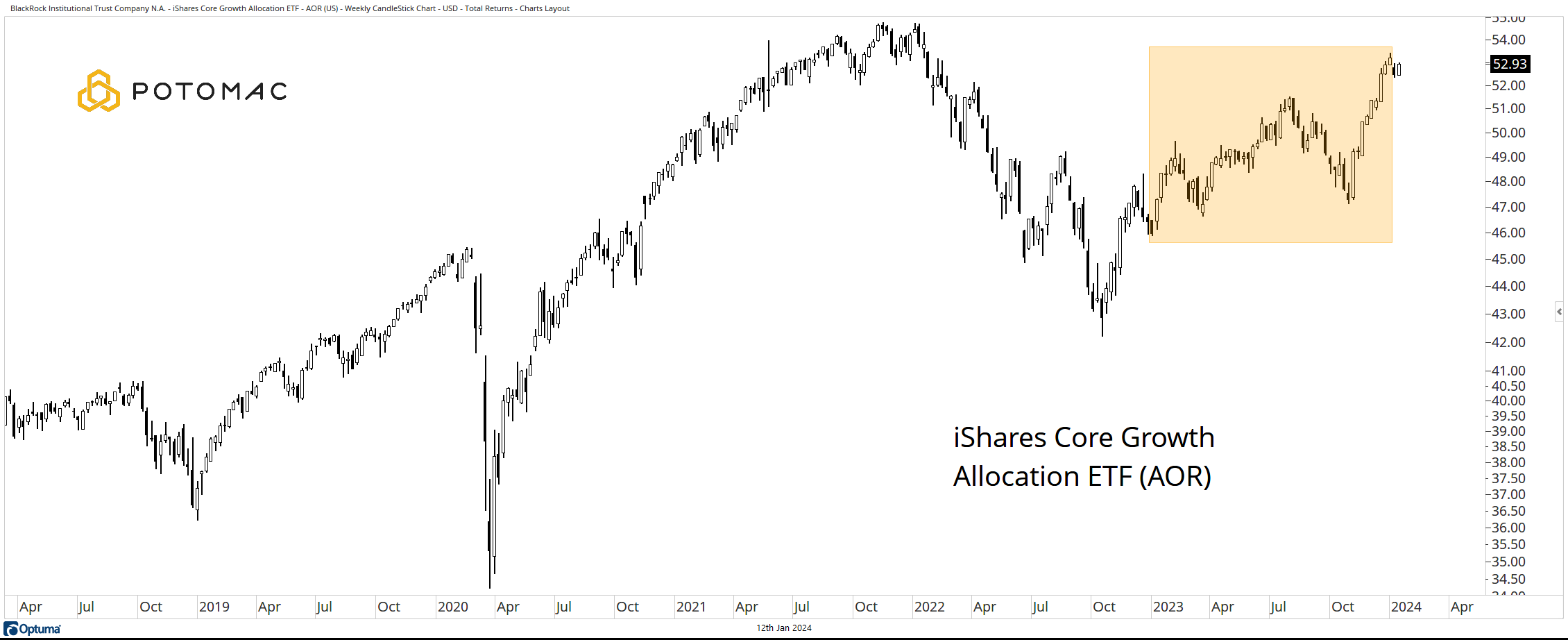
The portfolio is likely to act differently though. As we have said many times already, the “40” may not do the job you think it is there to do. If investors are looking for a bond to provide a hedge to equity exposure, they are likely to be disappointed going forward.
At the very least they should study the history of the stock bond relationship prior to the collapse of Long-Term Capital Management. In a year such as 2023 and quarters such as the fourth quarter, the 60/40 portfolio will be just fine as stocks and bonds move higher together.
But is that why the bonds are there?
I would argue it’s not. Especially since we now know that portions of the bond market can and have delivered equity-like drawdowns.
Even after a dramatic advance from October through December, the 30-Year Bond sits at a -36.27% drawdown and was as deep in the hole as -43.74%. It begs the question, what happens in a year when stocks and bonds go down together? Look no further than the year 2022 for your answer.
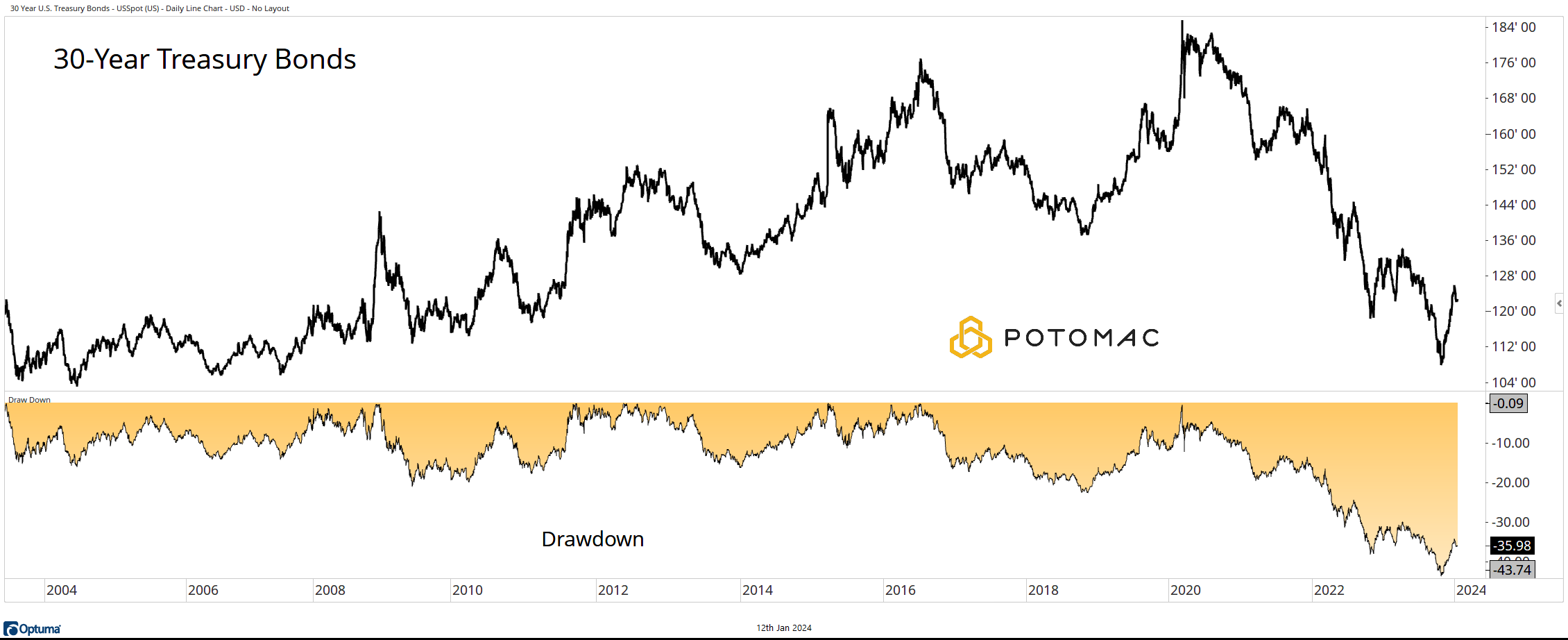
At the same time, treasury volatility remains elevated near prior crisis levels while equity volatility grinds lower.
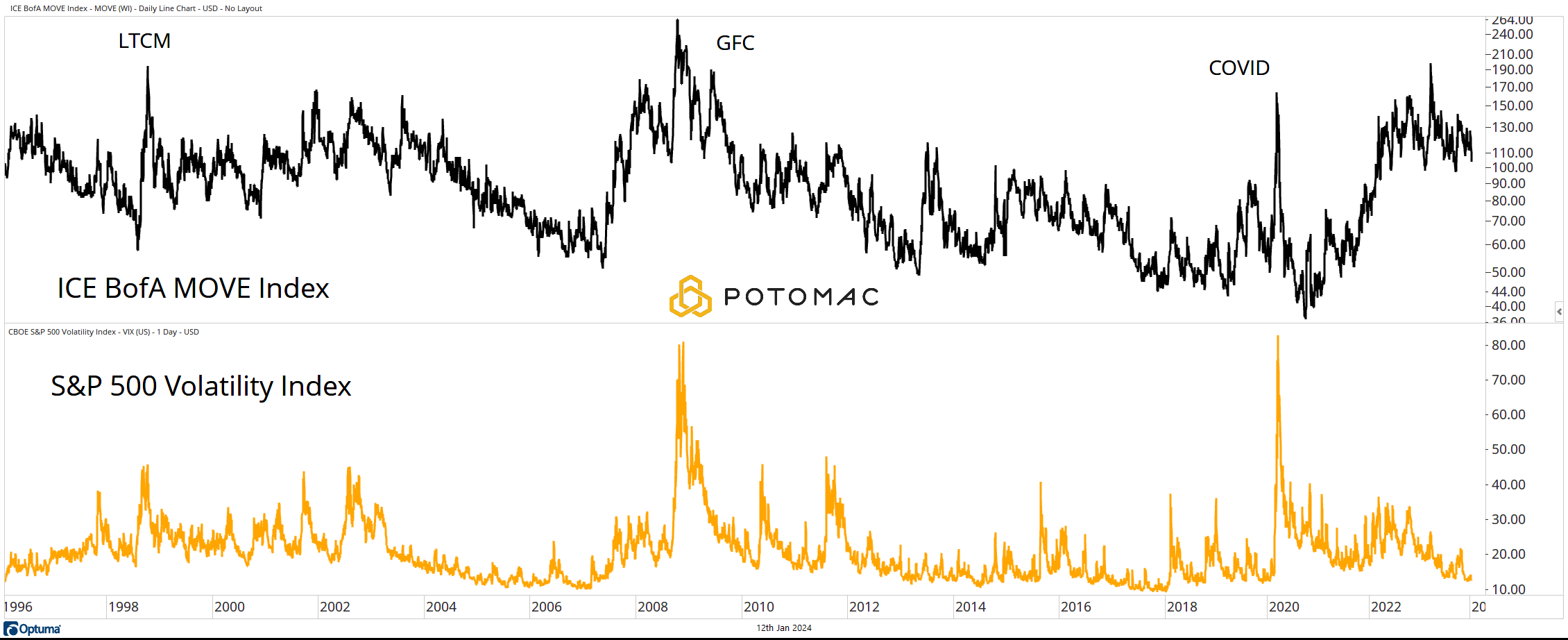
So, to recap, we are now into year three of an environment where the “safe” asset is moving in the same direction as the “risky” asset, and the “safe” asset is seeing its volatility rise while the “risky” asset sees its volatility fall.
Should asset allocation remain static in this environment?
Investors and allocators should be looking for assets that have the ability to and the track record of exhibiting lower correlation to the broader equity market over time.
Switching gears for a moment, 2024 has the potential to be very noisy. It is an election year in the U.S., so that is going to get a lot of attention. More than ever, we think it will be important to check your narratives and what you think they mean for markets.
We are already being asked questions along the lines of “If the Republicans win in November which sectors will do well?” Or “How would Biden’s reelection impact the market?” The short answer is “I have no idea.”
The problem is that we all kind of know what makes sense based on where parties traditionally stand on certain issues. So, let’s set the stage. January 2021, we have democratic control of D.C., the White House, the House, and the Senate. Given this backdrop, there is “no way traditional Energy (XLE) can do well in the market.” It must be THE moment for clean energy, like Solar (TAN). It makes logical sense; it would have been “dead wrong.” In fact, if someone put this on as a pair (long TAN vs Short XLE) it was probably a career-ender.
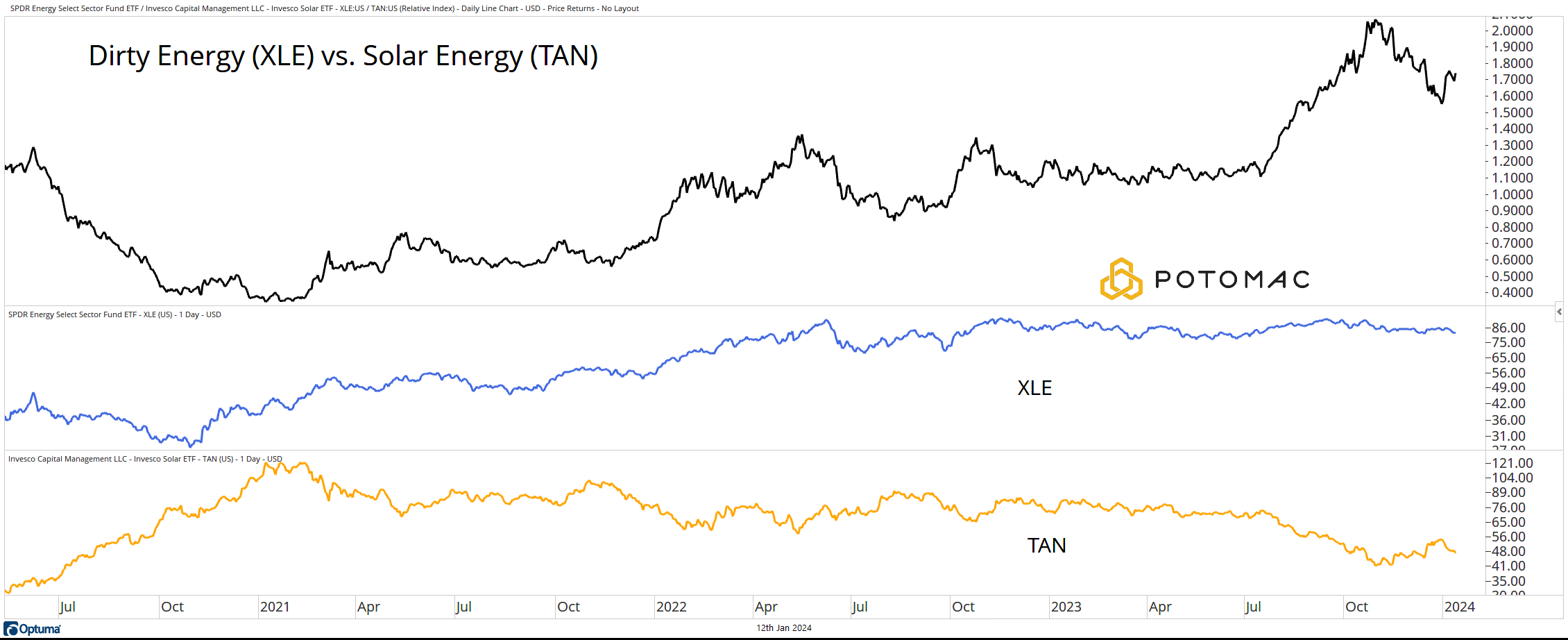
Check your narrative at the door.
*All charts are from Optuma as of January 11,2024
Potomac Fund Management ("Company") is an SEC-registered investment adviser. SEC registration does not constitute an endorsement of the advisory firm by the SEC nor does it indicate that the advisory firm has attained a particular level of skill or ability. This information is prepared for general information only and should not be considered as individual investment advice nor as a solicitation to buy or offer to sell any securities. This material does not constitute any representation as to the suitability or appropriateness of any investment advisory program or security. Please visit our FULL DISCLOSURE page. The company does not make any representations or warranties as to the accuracy, timeliness, suitability, completeness, or relevance of any information prepared by any unaffiliated third party, whether linked to the Company website or incorporated herein, and takes no responsibility for any of this information. The views of the Company are subject to change and the Company is under no obligation to notify you of any changes. Different types of investments involve varying degrees of risk, and there can be no assurance that the future performance of any specific investment or investment strategy will be profitable or equal to any historical performance level.
PFM-006-20240112
